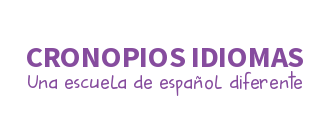Spanish expressions to use in bars & restaurants
One of the aspects of the Spanish culture foreigners appreciate much is its gastronomy. For this reason we would like to offer you in this post some Spanish expressions to use in bars & restaurants. After reading it, you are going to be ready to order something in a bar like a real Spaniard.
First of all you should know what are the most typical dishes in Spain. Although the variety is quite huge, we are going to introduce you here the ones you cannot miss in Madrid:
–Tortilla: is a Spanish omelette, made of potatoes, eggs and onions, and cooked in olive oil.
– Paella: is a rice dish originally from Valencia. It is a saffron-scented rice, cooked with rabbit, seefood and vegetables. And there are different versions for all tastes, even for vegetarians.
– Ensaladilla rusa: the Spanish Russian salad is a very popular dish and it is cooked with potatoes, carrots, boiled eggs, cooked peas, tuna, and mayonnaise.
– Patatas bravas: “spicy” potatoes, cut in chunks and fried in olive oil, are served with a special sauce (made of tomatoes, smoked Spanish paprika and flour).
– Pimientos de Padrón: they are a variety of peppers from Galicia. The small, bright green peppers have a special flavour and are served fried.
– Huevos revueltos: it is a dish of scrambled eggs mixed with other ingredients according to your taste (i. e. ham, onions, asparagus, shrimps, etc.)
– Bocadillo de calamares: it is a very beloved dish in Madrid. It typically consists of a French baguette, stuffed with fresh and crunchy calamari rings.
When Spaniards eat out with friends, it’s quite common to order different dishes to share. The Spanish tapas, worldwide known nowadays, are small portions of food and are usually served with a drink as a appetiser. But you can also order several tapas as a main meal and of course, it has a very important social aspect: sharing different tapas with friends is a really nice gastronomic experience.
Our Spanish school offers a program of activities to practice Spanish outside of class hours so that our students can have fun, meet people and enjoy our wonderful gastronomy.

Regarding the kind of tapas, they are either just simple like queso manchego, jamón serrano or olives or a small portion of a dish: for example, meatballs or paella. In some Spanish regions and bars tapas are served for free when ordering a drink.
Along with tapas, you can find pinchos. Pinchos are quite similar to tapas but they are always served with bread. For example, a pincho de tortilla consists of a slice of white bread with a piece of tortilla. Pinchos are traditional in northern Spain.
But it could be that you would like to share bigger portions of food with somebody, and in that case the best options are raciones. You can order, for example, a ración de ensaladilla rusa or media ración (half portion).
Regarding drinks, Spaniards drink as much wine as beer. But if you look around in outdoor bars, what people drink the most with tapas is beer and we are sure, you probably too. There are different Spanish brands and kinds of beer for all tastes. The most popular beer brands in Madrid are Mahou and Estrella Galicia. But you should better know some Spanish expressions to use in bars & restaurants regarding beers. There are different measures. Caña is a small glass of beer (a little less than half a pint). A doble is double the size of the caña. A tercio is a 330 ml bottle. And then there is also botellín, a 200 cl/ml. bottle.
Tipping is welcomed in Spain, but it is a much less common practice than in other countries. When ordering just a drink, nobody leaves a tip. Some people leave simply the coins they are given as change if they have ordered food. On the other hand, at a more expensive and elegant restaurant, tipping is more common (about 5 percent of the total bill).
And here we can provide you with some useful Spanish expressions to use in bars & restaurants:
1. To order a beer: Quería una cerveza.
2. If you are a beer connoisseur, you can ask for different brands and advice: ¿Qué marcas de cerveza tienen?, ¿cuál me recomienda?
3. If a single person orders something to eat: Para comer quería una tapa de + name/ una ración de + name
4. If several people order together something to eat: Para comer queremos + food name / vamos a tomar varias tapas.
5. To ask the waiter what tapas they have, you can say: ¿Qué tapas tienen?
6. To ask for suggestion, you can say: ¿Qué me recomienda pedir?
7. If you are a group of people and want to order something more substantial to eat and get full, you can order several raciones: Nos gustaría pedir varias raciones.
8. To ask for the bill, you can use either La cuenta, por favor or ¿Cuánto le debo?



